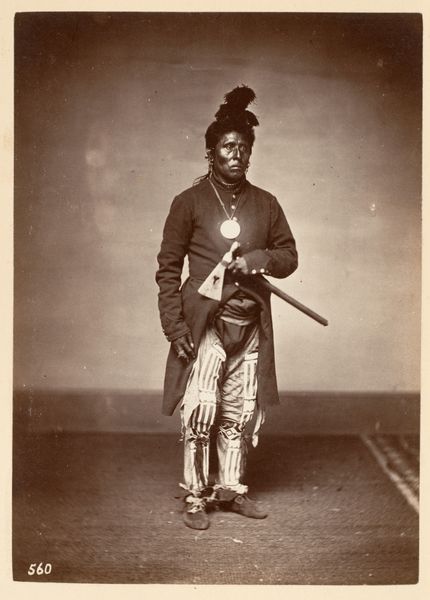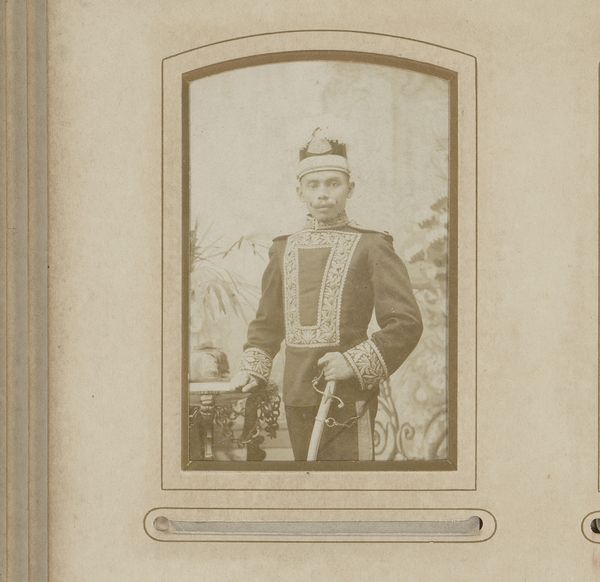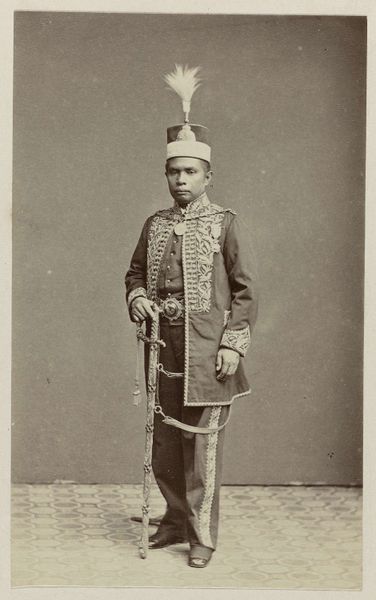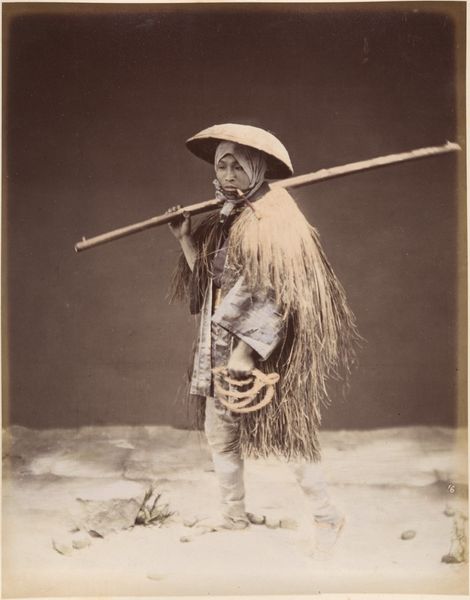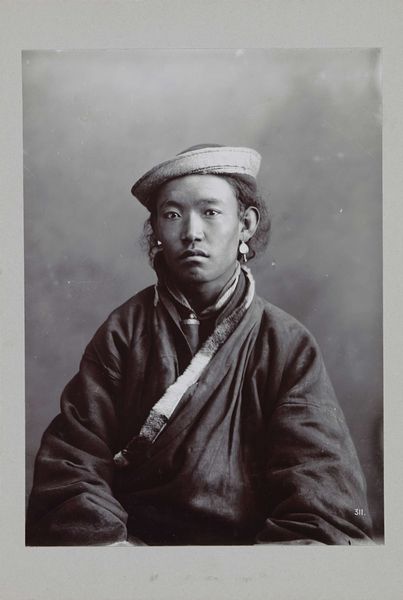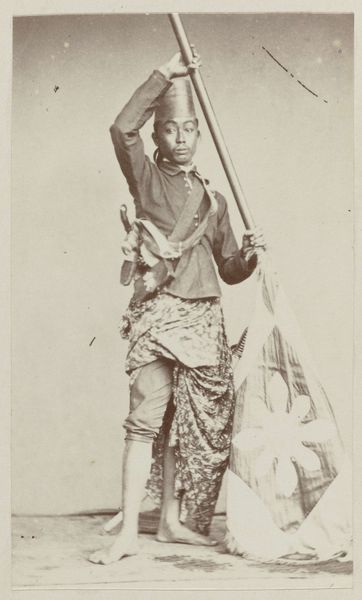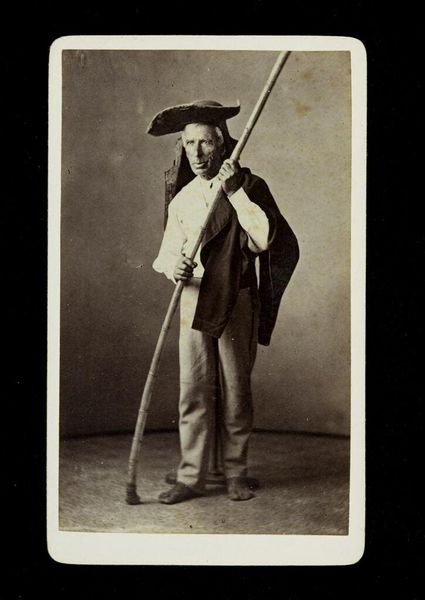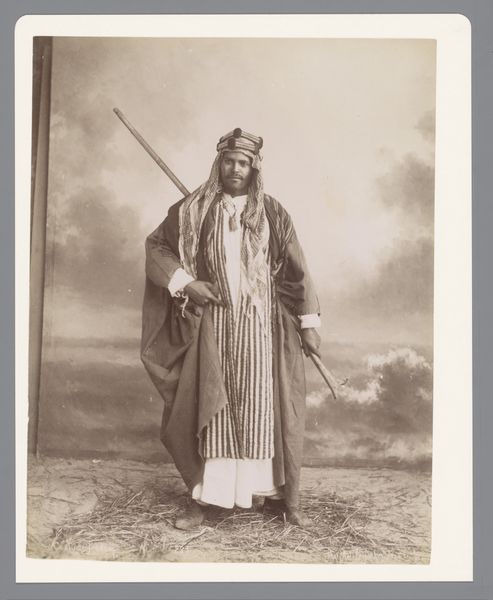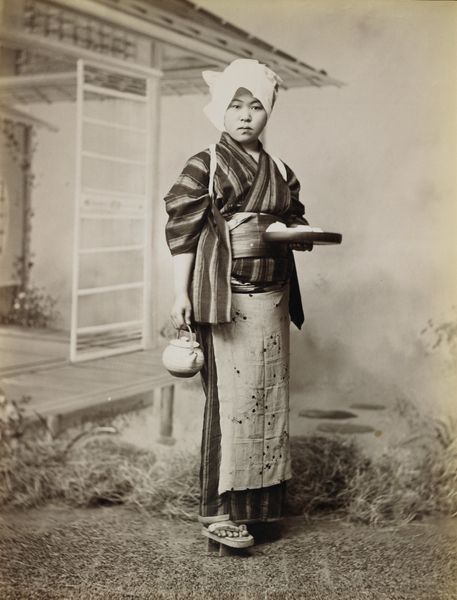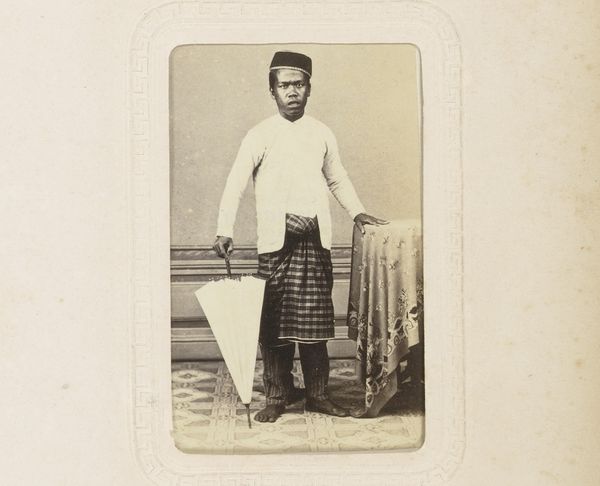
Untitled (a manservant or Khitmutghar with a flywhisk) c. 1860 - 1880
Dimensions: 13.7 Ã 10.2 cm (5 3/8 Ã 4 in.)
Copyright: CC0 1.0
Curator: Let's discuss this striking albumen silver print by Willoughby Wallace Hooper titled "Untitled (a manservant or Khitmutghar with a flywhisk)." It is part of the Harvard Art Museums collection. What are your initial thoughts? Editor: It's the textural contrast that grabs me first: the rough matting underfoot against the servant's smooth, almost luminous skin, and the coarse whisk. How were these materials sourced? Curator: Hooper, active in British India, captures more than just a visual; he documents the power dynamics of the colonial era through portraiture, which are often charged with racial and class tensions. Editor: Precisely. The flywhisk itself represents a very specific type of labor, control over the immediate environment. How much were these workers paid, if at all? What were their working conditions? Curator: His gaze is direct, challenging the viewer. The “flywhisk” serves not only as a tool but also as a symbol of the servant’s imposed role within a hierarchical system. Editor: A tool, yes, but also a commodity. Understanding the colonial structures allows us to see how this photograph becomes part of that system of labor, trade, and exploitation. Curator: Agreed. Reflecting on the photograph's composition, we see the subtle but firm grip on power dynamics, not just in India, but mirrored throughout colonial contexts. Editor: And for me, it underscores the critical need to always question the means of production, not just the product itself, in this case the photograph.
Comments
No comments
Be the first to comment and join the conversation on the ultimate creative platform.
